A malfunctioning sliding glass door handle can be a major inconvenience, making it difficult to access outdoor spaces and compromising security. Fortunately, fixing a sliding glass door handle is a task you can tackle with just a few tools and some basic know-how.
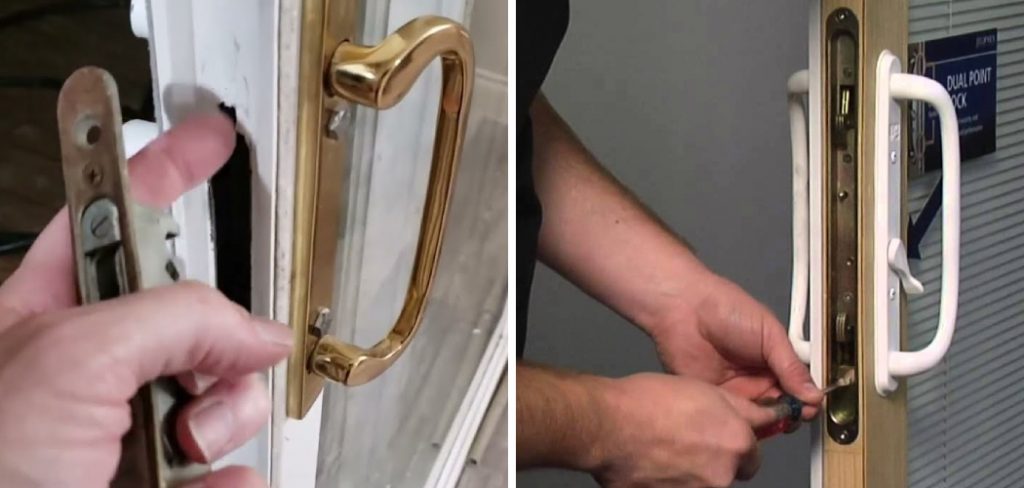
In this guide, we’ll walk you through the steps on how to fix a sliding glass door handle, gather the necessary tools, and make the repair. From tightening loose screws to replacing worn-out parts, our easy-to-follow instructions will help you restore your sliding glass door handle to perfect working order, ensuring smooth operation and enhanced security.
Importance of a Functional Sliding Glass Door Handle
A functional sliding glass door handle is essential for several reasons. First and foremost, it ensures easy and convenient access to your outdoor spaces, allowing you to seamlessly transition between your home and garden or patio area. Additionally, a working handle is crucial for maintaining the security of your home. A compromised handle can be an easy target for intruders, posing a significant security risk.
Furthermore, a functional handle prevents wear and tear on other parts of the door mechanism, such as the rollers and tracks, which can lead to more extensive and costly repairs if left unchecked. Lastly, a smoothly operating handle enhances the overall aesthetic and usability of your sliding glass door, contributing to the comfort and functionality of your living space.
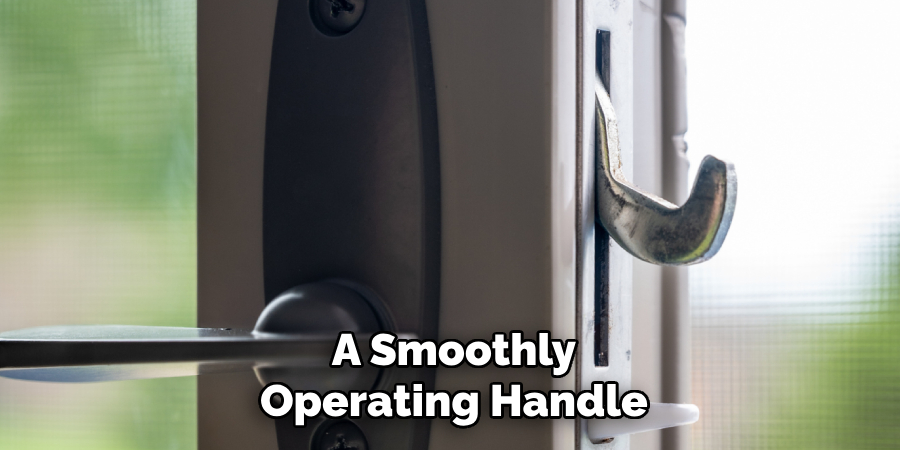
Common Issues with Sliding Glass Door Handles
Sliding glass door handles can experience a variety of issues over time, often stemming from regular use and exposure to the elements. One common problem is a loose handle, which can result from screws that have become stripped or unthreaded due to frequent operation. Another frequent issue is a misaligned handle, which can cause difficulty in opening or closing the door properly. Wear and tear on the internal locking mechanism can also prevent the door from latching correctly, compromising the security of your home.
Additionally, corrosion or rust can form on metal components, leading to reduced functionality and a compromised appearance. Finally, broken or cracked handles are a typical concern, usually resulting from accidental impact or the natural degradation of materials over time. Recognizing these common issues can help you address them promptly and maintain the smooth operation of your sliding glass door handle.
10 Methods How to Fix a Sliding Glass Door Handle
Method 1: Inspecting the Handle and Door Mechanism
The first step in fixing a sliding glass door handle is to thoroughly inspect the handle and door mechanism. Start by examining the handle for any visible signs of damage, such as cracks, bends, or wear and tear. Check if the handle is loose or if the screws are missing or stripped.
Next, inspect the door’s locking mechanism and latch to ensure they are functioning properly. Sometimes, the issue with the handle may stem from a malfunctioning latch or lock. Carefully test the door’s operation by opening and closing it multiple times to identify any specific problems. This initial inspection helps to diagnose the issue accurately, ensuring that you can proceed with the most appropriate fix.
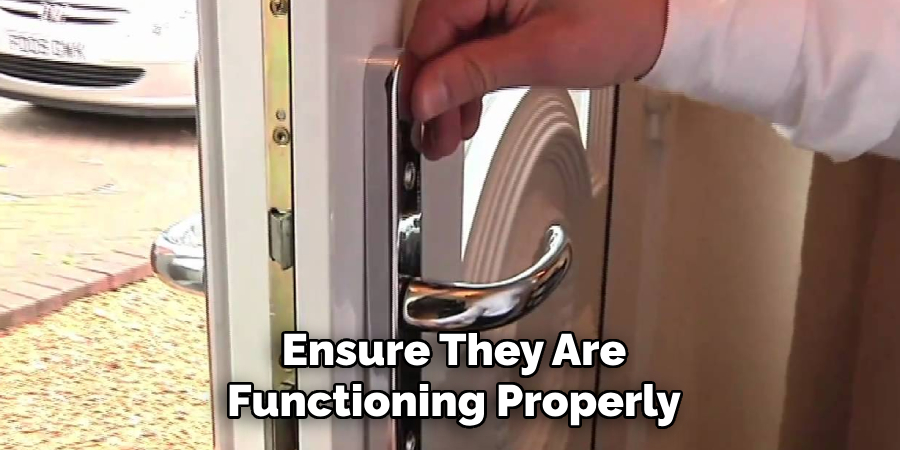
Method 2: Tightening Loose Screws
One of the most common problems with sliding glass door handles is loose screws. To fix this issue, gather a screwdriver that matches the screws on your door handle. Begin by locating the screws on the interior and exterior parts of the handle. Tighten each screw securely, but be careful not to overtighten and strip the screw heads. If the screws are stripped or worn out, replace them with new ones of the same size and type. Tightening the screws ensures that the handle is securely attached to the door, eliminating any wobbling or instability.
Method 3: Replacing Damaged Screws
If the screws holding the handle are damaged or stripped, simply tightening them may not suffice. In this case, you’ll need to replace the screws entirely. First, remove the old screws using a screwdriver. Take one of the old screws to a hardware store to find exact replacements. Choose screws made of durable materials, such as stainless steel, to ensure longevity. Insert the new screws into the holes and tighten them securely. Replacing damaged screws provides a strong, stable attachment for the handle, restoring its functionality and reliability.
Method 4: Realigning the Handle
Sometimes, the sliding glass door handle may become misaligned, causing it to function improperly. To fix this, loosen the screws slightly to allow for adjustment. Carefully realign the handle so that it sits straight and flush against the door. Ensure that the latch mechanism aligns correctly with the strike plate on the door frame. Once the handle is properly aligned, tighten the screws securely. Realigning the handle ensures smooth operation and proper engagement of the locking mechanism, preventing future issues with the door handle.
Method 5: Lubricating the Handle Mechanism
Over time, dirt, dust, and debris can accumulate in the handle mechanism, causing it to become stiff or difficult to operate. Lubricating the handle mechanism can resolve this issue. Use a silicone-based lubricant or a graphite spray, which are ideal for door handles and locks. Apply the lubricant to the moving parts of the handle, including the latch and locking mechanism. Work the handle back and forth to distribute the lubricant evenly. Avoid using oil-based lubricants, as they can attract more dirt and cause buildup. Lubricating the handle mechanism ensures smooth, effortless operation and extends the lifespan of the handle.
Method 6: Replacing the Handle
If the sliding glass door handle is severely damaged or broken, replacing it entirely may be the best solution. Start by purchasing a new handle that matches the specifications of your existing handle. Ensure that the new handle is compatible with your door’s thickness and locking mechanism. Remove the old handle by unscrewing the screws and detaching it from the door. Align the new handle with the holes on the door and secure it with the provided screws. Test the new handle to ensure it operates smoothly and locks securely. Replacing the handle restores the door’s functionality and provides a fresh, aesthetically pleasing appearance.
Method 7: Fixing a Loose or Broken Latch
A loose or broken latch can cause issues with the sliding glass door handle. To fix this, start by removing the handle to access the latch mechanism. Inspect the latch for any signs of damage or wear. Tighten any loose screws securing the latch. If the latch is broken or damaged, replace it with a new one. Align the new latch with the existing holes and secure it with screws. Reattach the handle and test the door to ensure the latch engages properly with the strike plate. Fixing the latch ensures the door locks securely and the handle operates correctly.
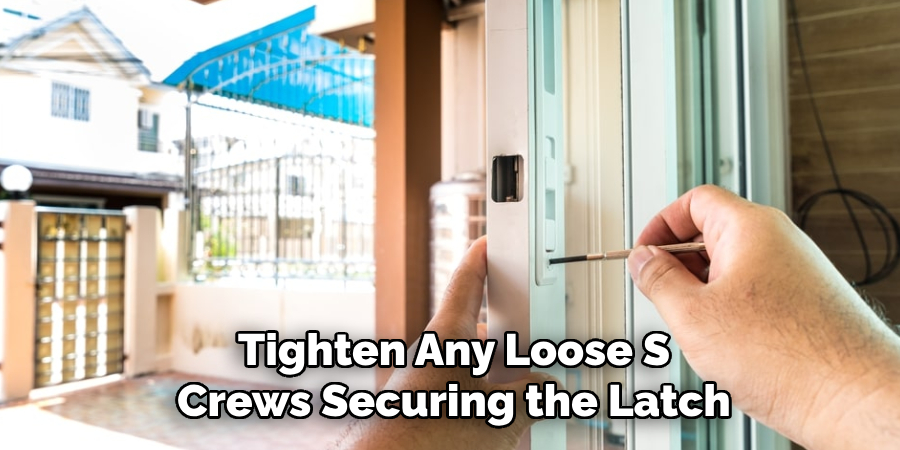
Method 8: Adjusting the Strike Plate
The strike plate, located on the door frame, plays a crucial role in the locking mechanism of the sliding glass door handle. If the strike plate is misaligned, the latch may not engage properly, causing issues with the handle. To fix this, first, inspect the strike plate for alignment. If it is misaligned, loosen the screws holding the strike plate and adjust its position so that the latch aligns perfectly. Tighten the screws securely after making the adjustments. If the strike plate is damaged, replace it with a new one. Adjusting the strike plate ensures that the latch engages correctly, allowing the handle to lock securely.
Method 9: Reinforcing the Door Handle Mounting Area
Over time, the mounting area for the sliding glass door handle can become worn or damaged, causing the handle to become loose or unstable. To reinforce this area, remove the handle and inspect the door surface. If the wood or material around the mounting holes is damaged, use wood filler or epoxy to repair the area. Allow the filler to dry completely, then sand it smooth. Drill new pilot holes if necessary and reattach the handle with new, longer screws for added stability. Reinforcing the mounting area provides a solid foundation for the handle, preventing future loosening or instability.
Method 10: Consulting a Professional
If you have tried all the above methods and the sliding glass door handle still doesn’t function correctly, it may be time to consult a professional. A professional locksmith or door repair specialist can diagnose and fix complex issues that may be beyond your expertise. They have the tools and experience to handle a wide range of problems, from misaligned mechanisms to damaged handles. Hiring a professional ensures that the job is done correctly and efficiently, restoring the full functionality of your sliding glass door handle. This method provides peace of mind and guarantees a high-quality repair.
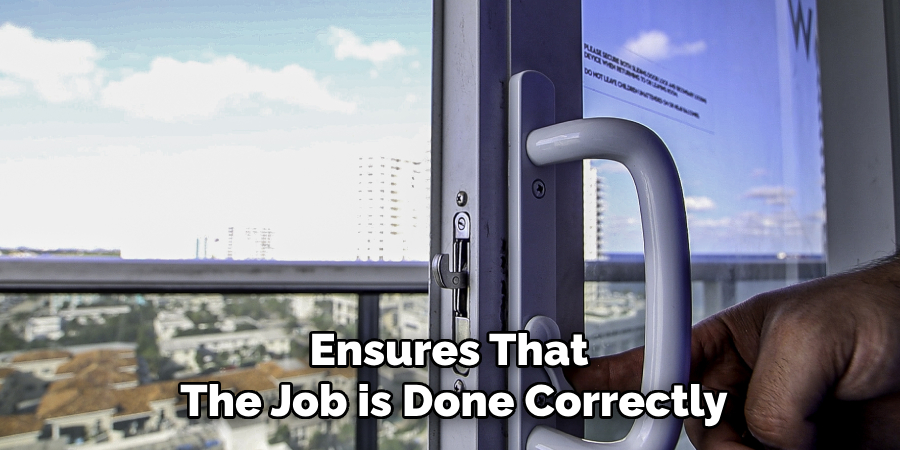
Conclusion
Maintaining your sliding glass door handle is essential to ensure smooth operation and security. By following the methods outlined in this guide, you can address common issues such as looseness, misalignment, stiffness, or damage effectively. Whether it’s tightening screws, realigning the handle, lubricating the mechanism, or even replacing the handle entirely, each step plays a vital role in restoring functionality and reliability. Thanks for reading, and we hope this has given you some inspiration on how to fix a sliding glass door handle!
About
Safety Fic is a distinguished figure in the world of Diy design, with a decade of expertise creating innovative and sustainable Diy solutions. His professional focus lies in merging traditional craftsmanship with modern manufacturing techniques, fostering designs that are both practical and environmentally conscious. As the author of diy, Safety Fic delves into the art and science of Safety Fic-making, inspiring artisans and industry professionals alike.
Education RMIT University
(Melbourne, Australia) Associate Degree in Design (Safety Fic) Focus on sustainable design, industry-driven projects, and practical craftsmanship. Gained hands-on experience with traditional and digital manufacturing tools, such as CAD and CNC software.
Nottingham Trent University
(United Kingdom) Bachelor’s in diyfastly.com and Product Design (Honors) Specialized in product design with a focus on blending creativity with production techniques. Participated in industry projects, working with companies like John Lewis and Vitsoe to gain real-world insights.
Publications and Impact
In diy, Safety Fic his insights on indoor design processes, materials, and strategies for efficient production. His writing bridges the gap between artisan knowledge and modern industry needs, making it a must-read for both budding designers and seasoned professionals.
